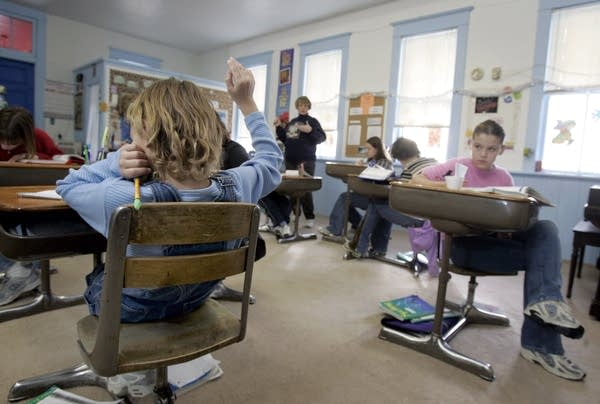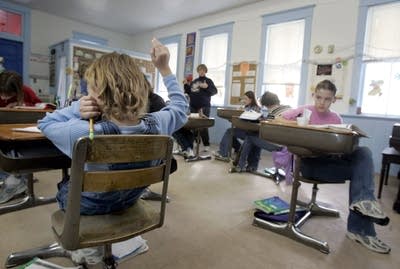School districts challenged by rising energy costs

Last year, the Bemidji School District spent about $1 million on utilities to heat and cool its buildings.
District business director Chris Leinen says this year, that cost could jump by as much as $300,000. Leinen says the volatility in the energy market, especially for natural gas, made it very difficult to plan ahead for winter heating costs.
"I anticipated about a 10 percent rise in the cost of heating our facilities and electricity," said Leinen. "But what I've seen in the natural gas market is scary... This summer it's risen as high as $14, which, if you do the math, is roughly a 60 to 70 percent increase over what we paid last year."
The good news is, those record-high natural gas prices took a steep drop in mid-July. But the latest projection from the U.S. Department of Energy still predicts the average price for natural gas in the Midwest will be 23 percent higher this winter than it was in 2007.
Create a More Connected Minnesota
MPR News is your trusted resource for the news you need. With your support, MPR News brings accessible, courageous journalism and authentic conversation to everyone - free of paywalls and barriers. Your gift makes a difference.
The August report also projects a seven percent increase in the price of electricity and a nearly 30 percent jump in the cost of fuel oil.
Leinen says many districts are already strapped for cash. He says the one percent increase in state funding for education this year doesn't come close to covering the rising costs. He says it means some schools might have to cut classroom funding.
"We'll have to make choices, and those choices will involve services to children."
"We're concerned that we're going to end up using general fund balance money in order to cover a short term shortfall, and that we'll have to find a way to balance the budget in the future," Leinen said. "So we'll have to make choices, and those choices will involve services to children."
Rising fuel and energy costs are forcing school districts across the country to take drastic measures.
A July survey by the American Association of School Administrators shows that nearly 30 percent of school districts are eliminating or modifying teaching positions. Fifteen percent are considering moving to a four-day school week.
The MACRAY School District in southwest Minnesota has already adopted a four-day week, and other districts are watching to see what happens.
Park Rapids School District business director Carol Hutchinson says administrators there have talked about a four-day week, but they're not ready to take that step.
"I think that we would do some other things first," said Hutchinson. "Dropping temperatures some in buildings, shutting lights off that aren't needed and, if it came to it, even shutting down school facilities on weekends. We would take steps like that probably before we would change the school calendar."
Some schools are looking for more long term solutions. The South Washington County School District is planning to put up a wind turbine at its new high school in Woodbury. Some schools are trying geothermal heating as a way to save energy.
But those alternatives are expensive. Park Rapids Superintendent Glenn Chiodo says budgets at most schools are so tight they can't afford to invest in things like renewable energy.
"It's an idealistic approach and one I think that a lot of us would like to go towards," said Chiodo. "The fact of the matter is, though, very few of us are in a position to step up and say we can invest this to get this in return. We're still, in a sense, held hostage because we can't make that jump."
Some schools are getting help to take that big step.
The tiny Kerkhoven-Murdock-Sunburg School District in west central Minnesota, just got a state grant to install a heating system that will burn wood chips and corn cobs.
Superintendent Martin Heidelberger says last year the district paid close to $100,000 in heating costs. He says the new system will cut those costs by nearly 25 percent.
Heidelberger says the district is taking other steps, too.
This winter, classroom temperatures will be reduced to about 66 degrees during the day, and even lower at night. They've upgraded to more energy efficient lighting. They've turned down the temperature of water heaters and even reduced water flow to locker room showers.
Heidelberger says high energy prices are forcing school districts to change how they do business.
"It's forced us to take a better look at ourselves as consumers within a larger entity as a public school," said Heidelberger. "I think the response has been favorable and it's been, what can we do as individuals and as a group. And I think we're seeing the benefit of that."
Winter heating costs for Minnesota schools will depend largely on just how cold it gets this winter, and how long the cold season lasts.
